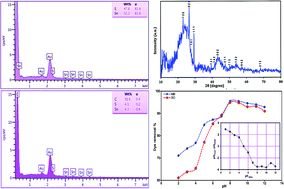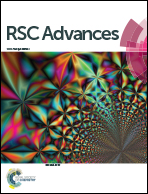Simultaneous and rapid dye removal in the presence of ultrasound waves and a nano structured material: experimental design methodology, equilibrium and kinetics†
Abstract
Tin sulfide nanoparticles loaded on activated carbon (SnS-AC) were prepared and characterized by FE-SEM, XRD, FT-IR and EDX. Central composite design (CCD) by response surface methodology (RSM) was employed to investigate the influences of process parameters like adsorbent mass, ultrasound time, initial safranin O (SO) and methylene blue (MB) concentrations at pH of 8.0 on the simultaneous adsorption of the two dyes on the SnS-AC. Analysis of variance (ANOVA) and t-test statistics were used to check the significance of the independent variables and their interactions on the adsorption efficiency. The predicted values were in good agreement with the experimental data MB (R2 = 0.994) and SO (R2 = 0.984), revealing the suitability of the constructed equations and CCD success in optimizing the adsorption process. Experimental results demonstrate high applicability and efficiency of dye removal by SnS-AC with more than 95% over a very short time (12 mg L−1 of each dye, 0.025 g of adsorbent at pH of 8.0). The adsorption for single and binary solutions of SO and MB followed the Freundlich model and the maximum adsorption capacities for MB and SO were estimated to be 71.1 and 67.3 mg g−1, respectively.


 Please wait while we load your content...
Please wait while we load your content...